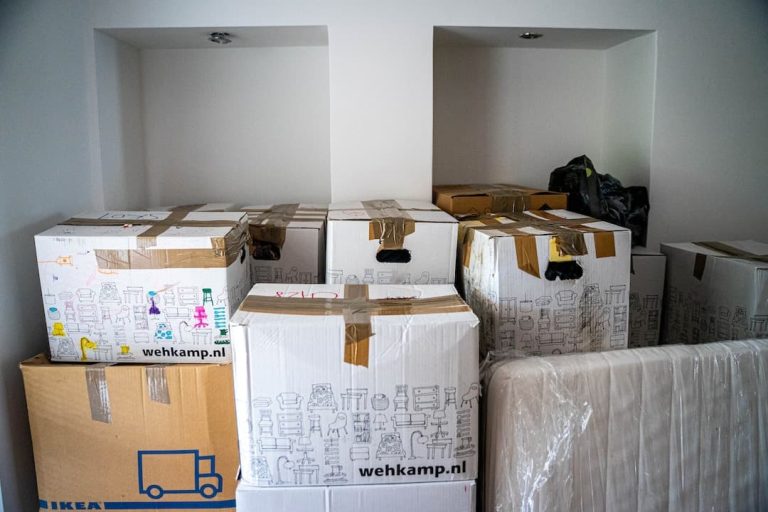7 Packing Tips to Prepare for a Long-Distance Move
Moving to a new home can be exciting, especially if you’re relocating to a city with a lower cost of living, like Louisville. In Louisville, KY, the cost of living is 4% less than the national average. It explains why the Louisville population has risen over the years.
But moving can also bring its own set of challenges. Among the biggest tasks? Packing! Ensuring all your belongings are safely and effectively packed is crucial. This task doesn’t just assist with transporting your items, but it also ensures they reach your new home in one piece.
And while the idea of packing up your entire life can feel a little overwhelming, with a bit of planning and some smart strategies, you can make the process smoother. Let’s dive into some practical tips to help you prepare for your big move.
Table of Contents
1. Hiring Long-Distance Movers
Moving is a task that demands time, effort, and attention to detail. While some people opt for a DIY approach, especially for short moves, long-distance relocations present unique challenges. That’s where the services of professional long-distance movers come into play. Here’s why hiring them is a wise decision:
Expertise in Packing and Handling:
You might have packed for a holiday or even a short move before, but packing for a long-distance relocation is a different ball game.
Professional movers have the expertise to pack items securely, ensuring they withstand the journey. They know exactly how to wrap, secure, and place items to minimize the risk of damage.
Efficient and Specialized Equipment:
Think about moving that heavy sofa or the delicate piano. Professional Louisville long distance movers come equipped with the right tools and vehicles to handle such tasks. They have specialized equipment to lift, move, and transport your items safely. This efficiency can save both time and potential damage.
2. Declutter Before Packing
Before you even start to pack, take a look around your home. Do you see items you haven’t used in a while? Maybe some clothes that don’t fit anymore, or old books you won’t read again? Now is the time to declutter.
When you declutter, you’re doing two things. First, you’re making sure you only take with you what you really need. Why pack and move stuff you won’t use? Second, by getting rid of excess items, you save space in moving boxes and trucks.
It might even save you some money, as many moving companies charge based on the weight or volume of your belongings. Consider donating items in usable condition to local charities or selling them online. Not only does decluttering lighten your load, but it also gives you a fresh start in your new home.
3. Invest in Quality Packing Materials
Once you know what you’re taking with you, it’s time to think about how you’re going to pack those items. Not all boxes and tapes are created equal. For a long-distance move, where your belongings might be on the road for days, it’s essential to use strong, sturdy packing materials.
Start by getting good-quality boxes. They should be able to hold weight without falling apart. Corrugated cardboard boxes are a great choice. For your precious items, consider bubble wrap or packing paper to add an extra layer of protection.
Don’t forget strong tape to seal the boxes tight. Cheap tape might seem like a saving, but if it doesn’t stick well, you might find your belongings scattered. It’s worth investing a little more now to ensure your items are protected throughout the journey.
4. Pack a First Night Box
Imagine this: after a long day of moving, you finally reach your new home. But where’s your toothbrush? Or your pajamas? Or the charger for your phone? To avoid this common problem, pack a First Night Box.
This box should contain everything you’ll need for the first 24 hours in your new place. Think of items like toiletries, a change of clothes, essential medicines, some snacks, and maybe even a kettle or a coffee maker. It means that even if you don’t get to unpacking everything right away, you have the most immediate essentials at hand.
5. Label Boxes Clearly
Once you start packing, you’ll realize you have a lot more stuff than you thought. And when you reach your new home, it can be a puzzle to figure out what’s inside each box. Save yourself the guesswork by labeling every box.
Write down the main items that are in the box and which room it belongs to. For example, “Kitchen – Pots and Pans” or “Bedroom – Winter Clothes.”
It not only helps you while unpacking but also guides any helpers or movers. If there are breakable items inside, add a big FRAGILE sign. It’s a simple step, but trust us, it makes life a lot easier when you’re settling into your new space.
6. Protect Fragile Items
Everybody has items that hold special value, whether it’s a set of fine china, delicate ornaments, or sentimental keepsakes. When moving, it’s crucial to give these items extra care. The best way to do this is by using bubble wrap, packing paper, or even soft towels to cushion them.
For glasses or vases, wrap each item individually since this prevents any chips or cracks. Plates are best packed vertically rather than stacked since doing this reduces pressure and potential breakage.
Also, avoid putting too many fragile items in one box. Distributing them between boxes and surrounding them with softer, cushiony items like clothing or pillows can further protect them. Always remember to label these boxes as FRAGILE so everyone knows to handle them with care.
7. Disassemble Large Furniture
Big furniture items like wardrobes, beds, or desks can be tricky to move. They’re heavy, cumbersome, and can easily get damaged or cause injury. That’s where disassembling comes in. By breaking down furniture into smaller parts, you make them easier to pack, move, and load into a truck.
Before you start, make sure you have the right tools. Usually, a simple screwdriver or a wrench will do the job. Keep all screws, nuts, and bolts in a small plastic bag, and tape this bag to the furniture piece so you don’t lose it. Taking a photo before disassembling can also help. It acts as a quick reference when you’re trying to put it back together in your new home.
Conclusion
Moving long distances might seem like a monumental task, and in many ways, it is. But with the right strategies, it doesn’t have to be overwhelming. By decluttering, investing in good packing materials, preparing a first-night box, labeling clearly, protecting fragile items, and smartly handling large furniture, you’re setting yourself up for success. Remember, the key lies in preparation. Each step you take in safeguarding your items ensures they reach your new home in the best condition.




